ASTANA — The Akmola Region, rich in history and culture, has sacred sites that testify to the greatness of the past and the deep spirituality of the people. Out of 45 sites in the Sacred Kazakhstan list, six are located in the Korgalzhyn district. The history of five famous mausoleums in this region has been spotlighted in a series of articles by Kazinform news agency.
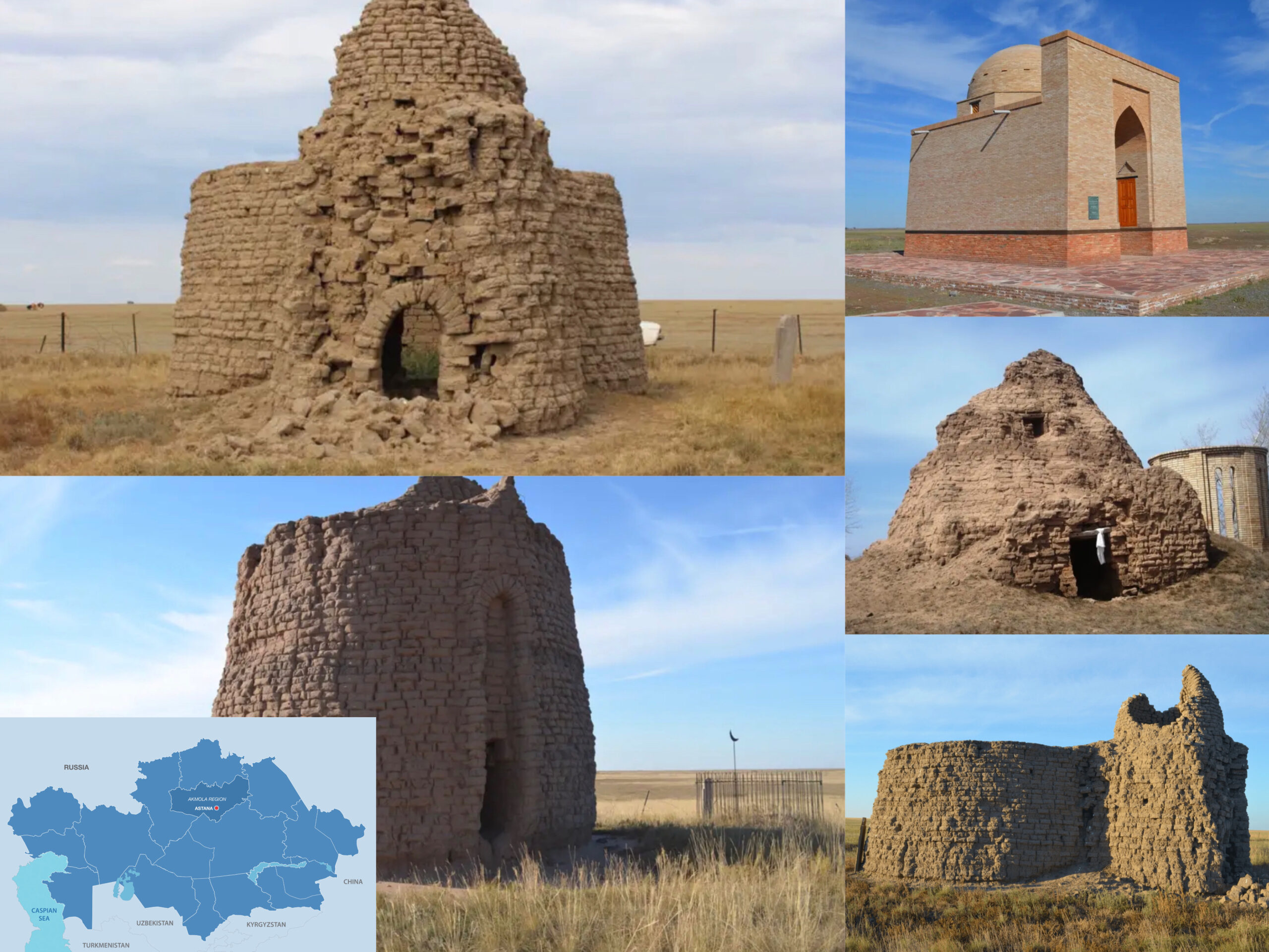
Photo credit: The Center for the Protection and Use of the historical and Cultural heritage of the Akmola region. Collage is created by The Astana Times. Click to see the map in full size. The map is designed by The Astana Times
The Korgalzhyn district is one of the popular tourist zones in the region. Renowned not only for its beautiful scenery but also for its famous landmarks, this area has historically served as grazing grounds for nomadic tribes.
The district and the village of Korgalzhyn were established in 1928. From 1932 to 1941, the district was part of the Karagandy Region. Since 1941, it has been part of the Akmola Region.
Kanykei Mausoleum
The Kanykei Mausoleum is the burial place of the brave warrior girl Kanykei, who died during the Kazakh-Dzungar war between 1643 and 1756. Located four kilometers north of the Orkendeu village, on the right bank of the Nura River, this mausoleum is a testament to the uncompromising struggle of the Kazakh people. According to legend, 15-year-old Kanykei commanded a group of female archers. In response to their effectiveness, the huntaishi, a title for major feudal lords in Mongolia from the 14th century, lost its commanders and created a special unit to counter them.
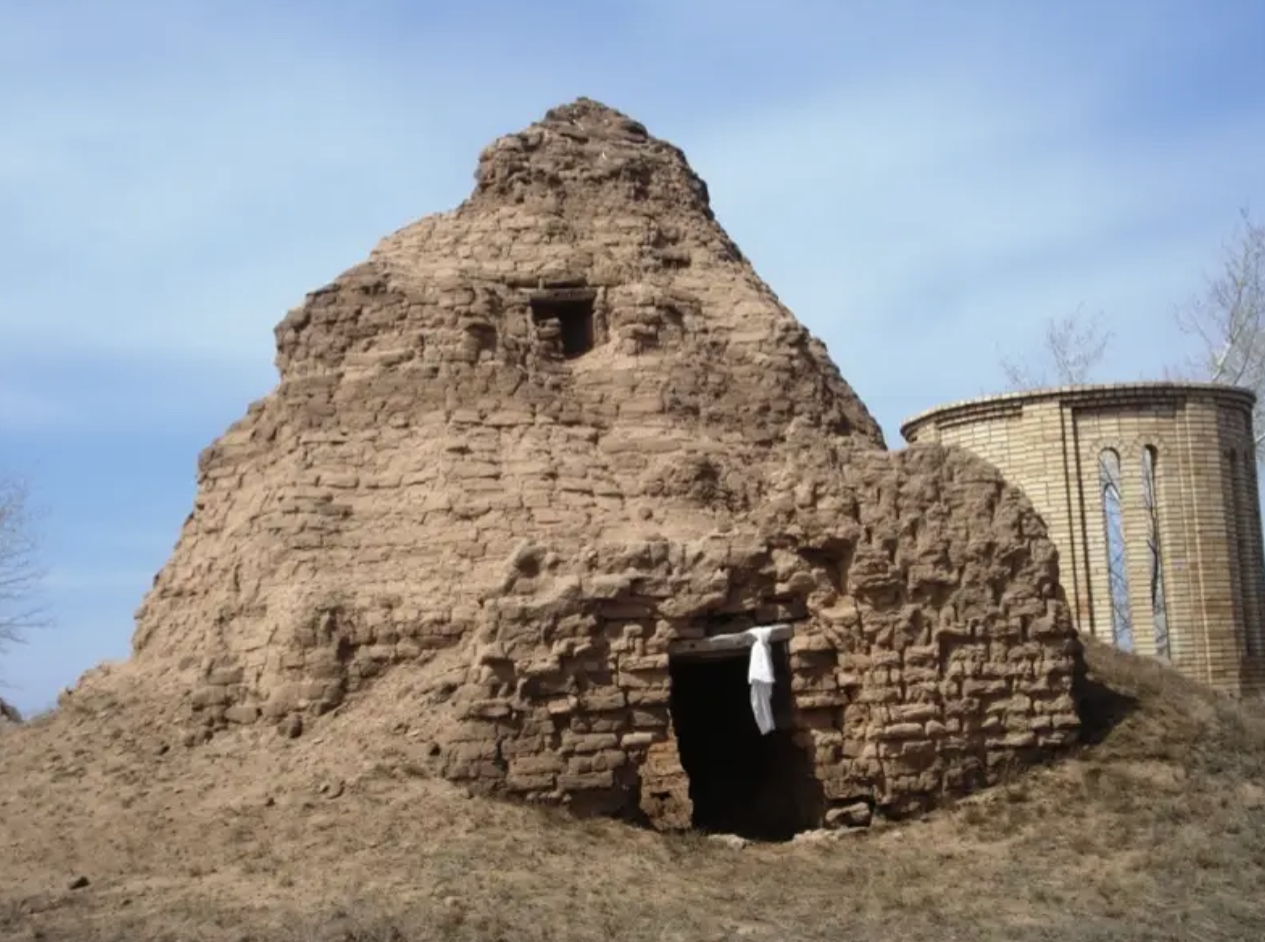
Kanykei Mausoleum. Photo credit: The Center for the Protection and Use of the historical and Cultural heritage of the Akmola region.
In the unequal battle, Kanykei perished. The Kazakh troops destroyed the unit, avenging Kanykei’s death, and the girl was buried like a true warrior. A red brick tombstone appeared at the burial site, but over time, it began to decay due to the winds and rains.
Alyptomar Mausoleum
The Alyptomar Mausoleum, which is six meters high, symbolizes faith and devotion. It has a spherical dome and an entrance adorned with an arch constructed with cobblestone masonry. The structure is traditionally made from raw brick, incorporating sandstone and grass as fillers.
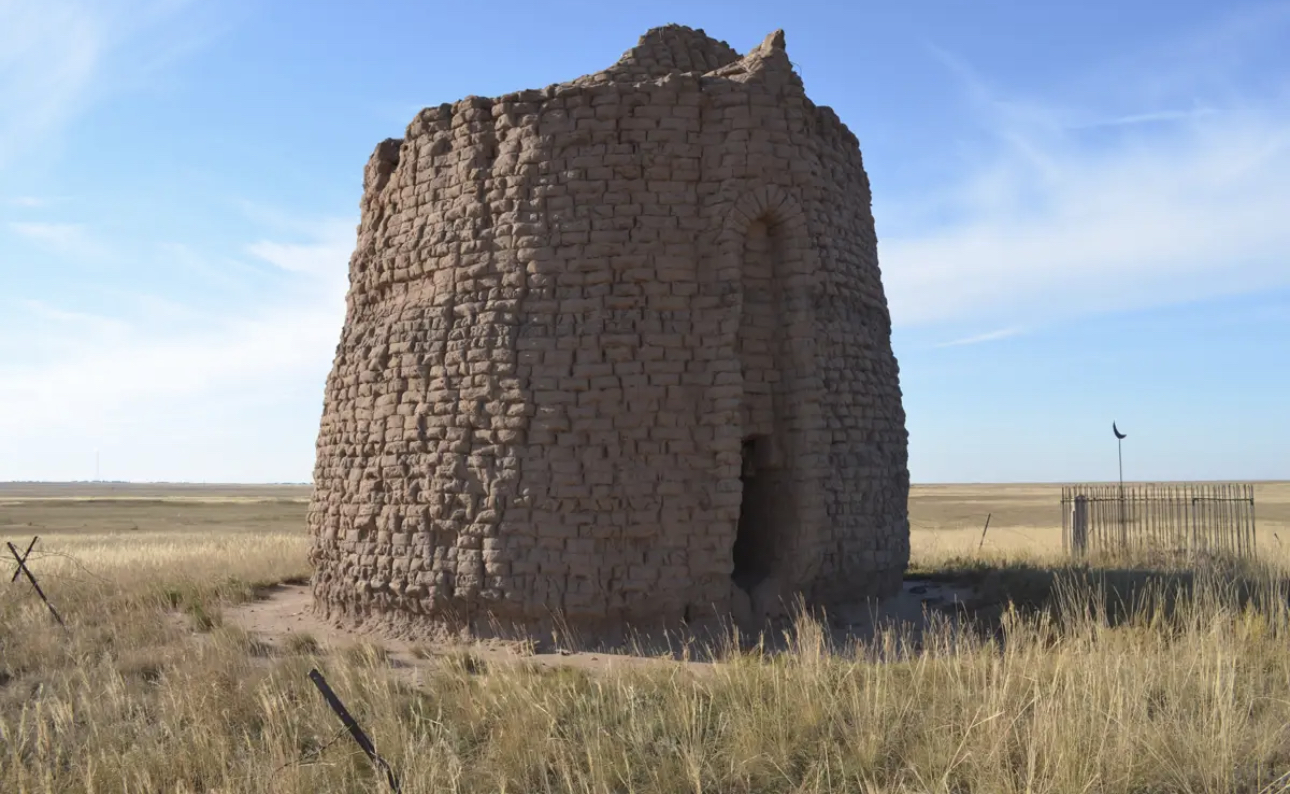
Alyptomar Mausoleum. Photo credit: The Center for the Protection and Use of the historical and Cultural heritage of the Akmola region.
The history of this mausoleum dates back to the late 19th century when the preacher Alyptomar set out on a pilgrimage to Mecca with one of his sons. His planned six-month journey was interrupted by his death on the fifth day
The mausoleum, preserved to this day, symbolizes the people’s respect for a righteous man who found eternal rest on the way to the holy land of Muslims.
Ak Edil Kozha Mausoleum
Located in the village of Zhumai, the 19th-century Ak Edil Kozha Mausoleum is dedicated to a devout missionary and educator. His life was dedicated to spreading knowledge and helping those in need. Ak Edil Kozha used taxes collected from the wealthy to establish madrasas (a place of study) in villages where children from all social groups were educated. He also provided financial support to those wishing to perform the Hajj pilgrimage, also known as the pilgrimage made to the Kaaba.
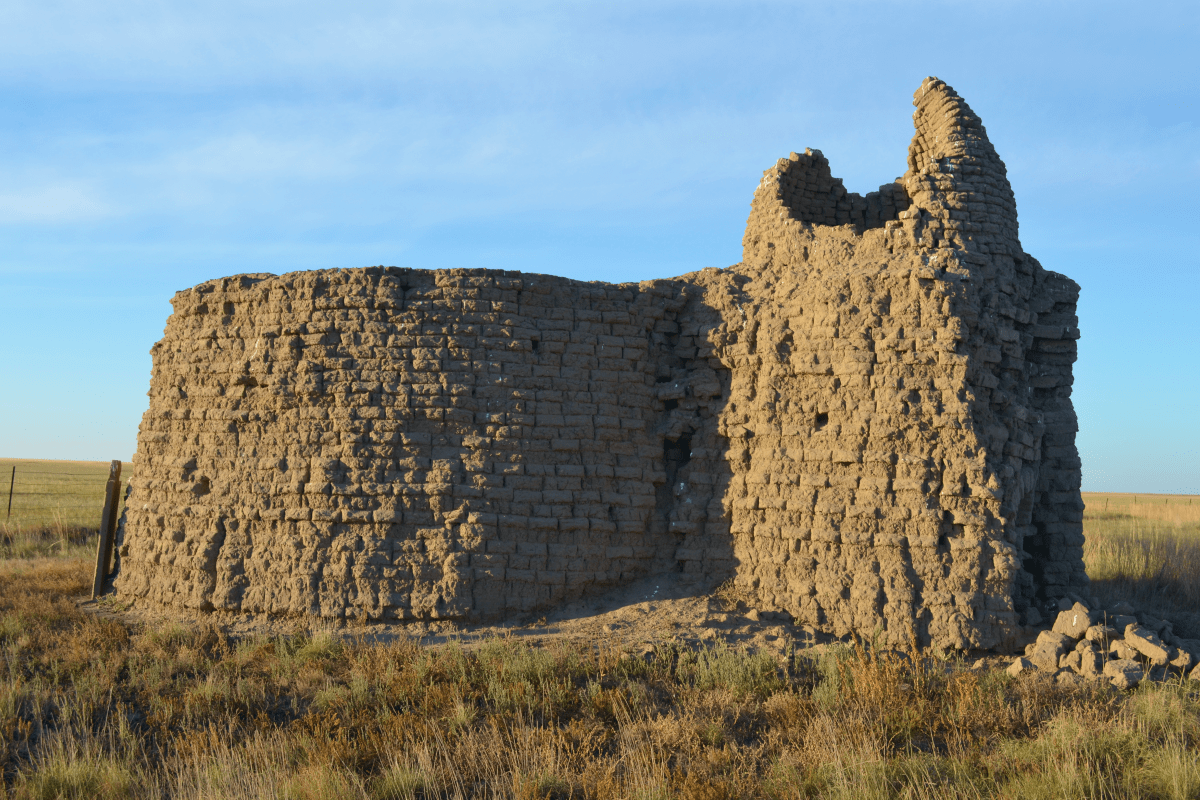
Ak Edil Kozha Mausoleum. Photo credit: The Center for the Protection and Use of the historical and Cultural heritage of the Akmola region.
After Ak Edil Kozha’s death, the people erected a mausoleum in his honor as a Kazakh yurt (traditional nomadic housing), symbolizing home and hospitality. The mausoleum, standing five meters tall, features an entrance on the eastern side through a rectangular door three and a half meters high.
Bytygai Mausoleum
The Bytygai Mausoleum, located on the left bank of the Nura River, was once a city and the residence of Tauke Khan. This mausoleum reminds us of its past greatness as a crossroads of the Great Silk Road.
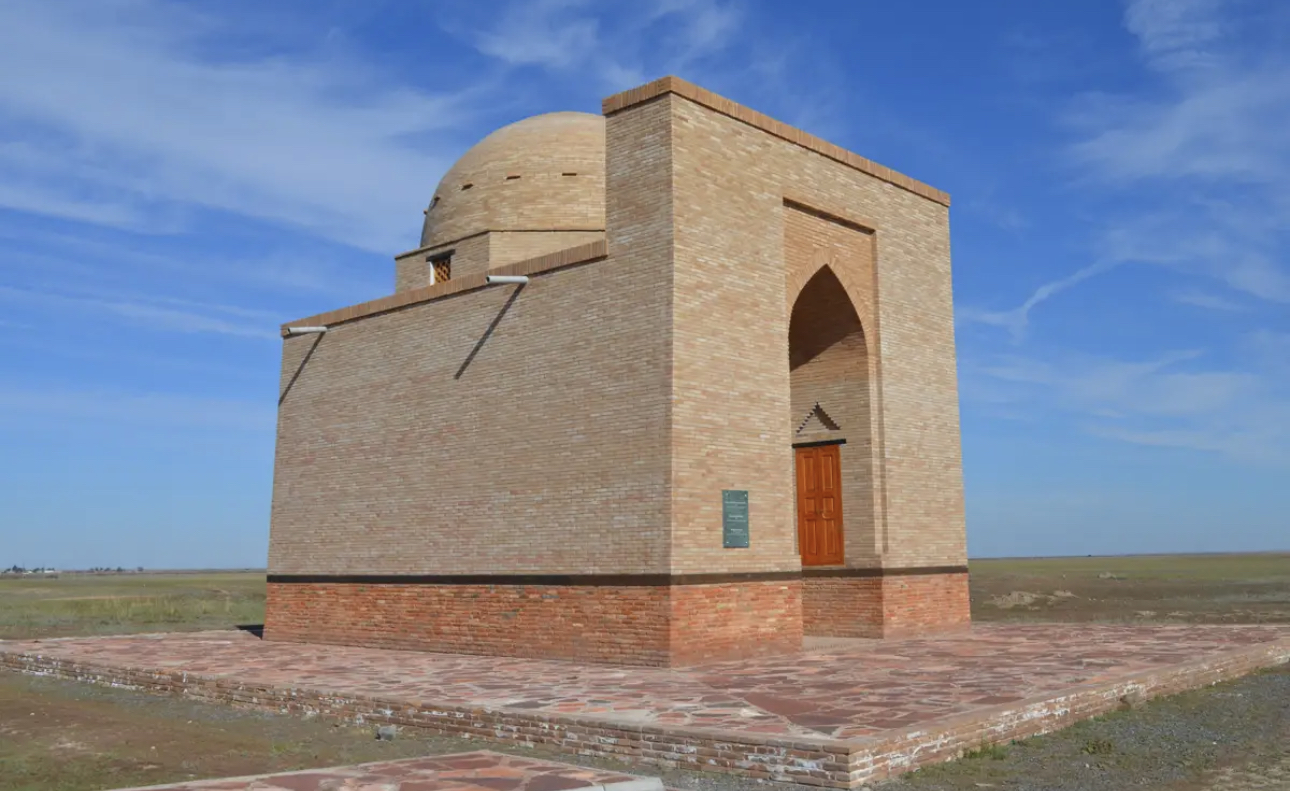
Bytygai Mausoleum. Photo credit: The Center for the Protection and Use of the historical and Cultural heritage of the Akmola region.
Bespakyr Mausoleum
On the right bank of the Nura River in the Abai village stands the Bespakyr Mausoleum. According to legend, it was built in honor of five warriors who died during the national liberation war of 1837–1847 under the leadership of the last Kazakh khan, Kenesary.
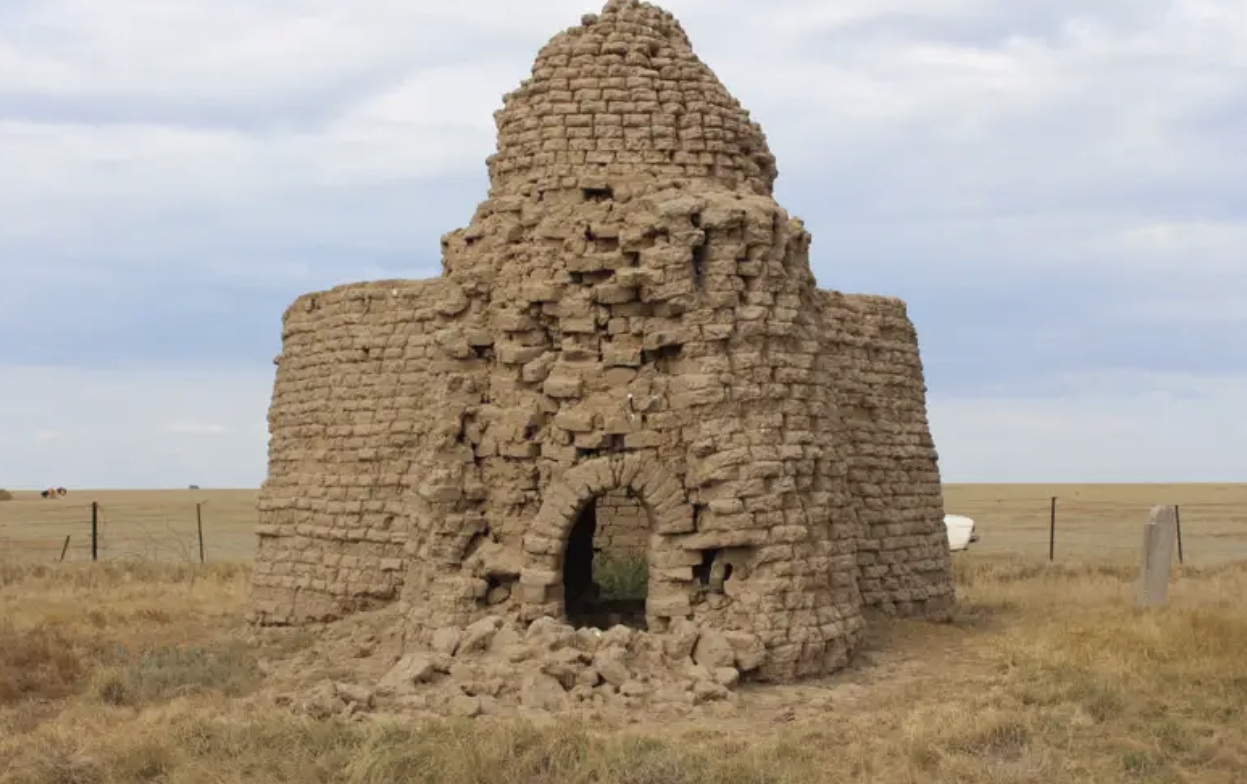
Bespakyr Mausoleum. Photo credit: The Center for the Protection and Use of the historical and Cultural heritage of the Akmola region.
This mausoleum consists of two parts. The central part, a sagan (a special type of clay vessel used in Kazakh culture), has a diameter of six and a half meters and a domed entrance part with a diameter of approximately 2.8 meters. The mausoleum is constructed from raw brick, incorporating materials such as sheep’s milk, wool, horsehair, and clay.
These five mausoleums are just a small part of the rich cultural heritage of the Akmola region. Together, they represent historical monuments and symbols of faith, devotion, and heroism.

